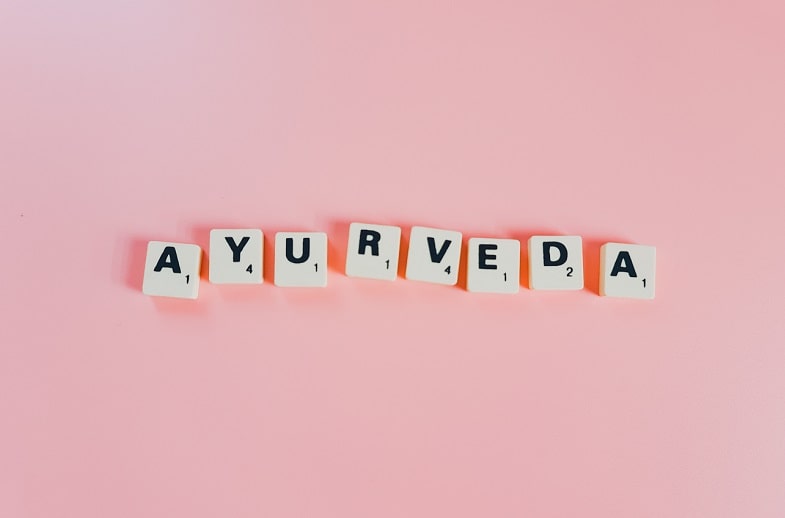Published on: 30/09/2023
CANNABIS AND AYURVEDA: WHAT DOES INDIAN MEDICINE SAY ABOUT MARIJUANA USE?
Marijuana and weed seeds has a prominent place in Ayurvedic culture and, according to ancient texts, is used for preventive health. However, like most substances, its abuse can lead to damage to health and consciousness.
Which ones?
In this article, we will explore how Ayurveda uses marijuana and what effects it has on the nervous system and consciousness.
Ayurvedic description of marijuana: what the ancient Ayurvedic texts say about marijuana
The Ayurvedic materia medica or Nighantus is rich in medicinal information and information on the therapeutic uses of marijuana (coming from cannabis seeds).
For example, the Bhav Prakash Nighantu mentions the use of marijuana for the treatment of diarrhea and nasal congestion. Chakradatta speaks of marijuana’s antimicrobial property and its success in treating leprosy. Nighantus also recommends marijuana to relieve pain, inflammation, nausea, congestion, respiratory disorders and more.
Given the popularity of this plant with its many properties, Sanskrit has coined several names for cannabis. Specifically, Ayurvedic synonyms for marijuana emphasize the herb’s healing impact, such as:
- Vijaya – the victorious;
- Siddhi – one who bestows success;
- Madani/Matulani – one who creates intoxication;
- Pachani – improves digestive capacity;
- Kamda – improves libido;
- Nindrakara – improves sleep.


These are the Ayurvedic properties of marijuana that (perhaps) you did not know about
According to Ayurveda, marijuana is pungent, light, sharp, penetrating (i.e. it spreads rapidly throughout the body) and capable of producing heat and bitterness after digestion.
According to this discipline, due to its properties, marijuana can cause an increase in the Pitta Dosha, but it also helps to balance the Kapha and Vata Dosha (three vital forces that regulate the well-being of our organism).
But at this point the question arises: how does Ayurveda use marijuana? Simple: in prevention.
The Ayurvedic preventive practice of using marijuana is rooted in religious rituals, and such guided use could also act as a deterrent to discourage misuse or abuse of the substance.
Consider that marijuana is the main ingredient in Thandai, an herbal drink prepared for India’s spring festival of colors – Holi. And yes, it has an Ayurvedic meaning.
Spring is the season when the Kapha Dosha gets spoiled. And, as we mentioned earlier, marijuana helps balance excess Kapha, as well as helping to prevent coughs, colds and seasonal congestion.
Shiv Ratri is another festival of great importance for health that takes place in spring and whose main deity is Shiva. Devotees observe an all-day fast that ensures the removal of excess Kapha and consume marijuana after fasting to further improve Kapha balance in the body.
But that is not all.
Ayurveda – which, let us remember, in India is considered a medicine in its own right – uses marijuana (for example from feminized seeds) for
immediate pain relief;
Kapha ailments – such as congestion, coughs, colds, respiratory problems, asthma, etc.; and
insomnia;
digestive disorders;
general rebalancing of the Doshas.
Cannabis and Ayurveda: the impact of marijuana on the nervous system
In states where marijuana is legal, ‘ganja yoga’, or doing yoga while using cannabis, has become a lucrative activity. It is fashionable, people love it, but like all things that seem too good to be true, doing yoga while ‘high’ can mask real feelings of physical and emotional pain, delaying true spiritual work and personal growth.
The so-called ‘high’ feeling one gets from marijuana is due to the effect of THC on the nervous system. Although not everyone responds to cannabis in the same way, the herb generally increases the state of calm by stimulating the parasympathetic nervous system. Simultaneously, it increases the reward hormone, dopamine, making the experience even more rewarding.
People who consciously use legal cannabis say they feel less anxious, more relaxed, more self-aware, more meditative and spiritual. Some say they feel more coordinated and are less prone to injury when practicing yoga.
Ayurveda, Tamas, Rajas, Sattva e cannabis
Reading this headline, you might think we have put a series of random words between ‘Ayurveda’ and ‘cannabis’, but we have not.
Now let’s break them down one by one.
Well, according to Ayurveda, marijuana is a soma, or sacred plant, which can play a role in promoting a meditative state. If you think about it, alcohol also has similar effects when taken in small doses – think of the feeling of relaxation after a glass of red wine with dinner.
The problem, however, is that the potential benefits of cannabis and alcohol are often compromised by the risk of overuse, abuse and dulling of consciousness.
Here, Ayurveda describes cannabis as a tamasic, or inertial drug, which suggests that it has the ability to numb the senses.
But before all this, Ayurveda had given the green light to cannabis for pain reduction, not spirituality. Because it had an anaesthetizing and calming effect, it was also used to help people who had trouble calming themselves during meditation or yoga. Therefore, it was not the plant that would ultimately lead to higher states of consciousness but, as a tamasic drug, it would block pain in the body and dull the senses and mind.
Here we come to the first ‘strange’ word in the title: tamas.
An excess of tamas indicates a state of consciousness in which one is blocked, introverted and fearful. This may explain why, for some users, excess cannabis can cause anxiety, fear and excessive self-consciousness. In Ayurveda, tamasic behavior is most commonly caused by overstimulation of rajas – the second word on our list.
Rajas, or aggression, is a state of consciousness fueled by stimulation, aggression and action. In its unbalanced state, rajas can lead to sensory overstimulation and addiction.
From an Ayurvedic and yogic perspective, rajas and tamas have an ephemeral nature and are not capable of bringing lasting satisfaction or higher states of consciousness. Being in tamasic or rajasic states, however, can help motivate people to find greater balance and lasting contentment when they realize they are prone to dissatisfaction or too depressed to act.
Here, a balanced and satisfied state of consciousness is called sattva, or harmony.
Sattva is a state of natural self-awareness, thus different from the illusion of self-awareness that one can experience when consuming cannabis.
Try this: the illusory state that, for example, many people report as being significantly better when practicing yoga while under the influence of cannabis. This is a trap: cannabis alone does not increase consciousness or self-awareness.
A true sattvic state – which is the spiritual goal of Ayurveda – is a lasting fulfilment and is not brought about temporarily by a substance that dulls the senses and pain sensations (physical and mental).
The use of cannabis for pain relief according to Ayurveda
Using a substance like cannabis, initially legalized to block pain, as a tool to increase self-awareness is a contradiction.
This is because cannabis blocks pain, yes, but it also blocks awareness of it.
In Ayurveda, pain is a tool to draw attention to us, we go to it, work through it and then experience bliss. This process helps to develop higher states of consciousness. In Ayurveda, blocking pain actually holds back spiritual progress.
However, many of us try to avoid pain and discomfort at all costs, sometimes forcibly repressing it. Right or wrong, Ayurveda describes the process of emotional numbing as a shift from sattvic, loving and compassionate behavior to rajasic forms of sensory stimulation.
Which is?
When the senses are overstimulated and the nervous system is exhausted, the mind cannot calm down and naturally seeks out a tamasic drug, such as cannabis might be. A tamasic experience may seem very peaceful, even spiritual, but in reality it is just a numbing experience.
To find one’s spiritual path, a tamasic person must find the courage to come out of their tamasic cocoon and re-enter reality, even if it is painful.


What are the consequences of excessive cannabis use for Ayurveda?
Needless to say, but inappropriate use of marijuana can lead to several health problems: for instance, it can damage the liver and reproductive system; it can cause impotence or infertility, constipation, dry skin and organs; it can reduce immunity, strength, energy, motivation, happiness, and weaken the body’s sexual desire and ability to heal itself.
Abuse of this substance can also cause severe damage to the skin and connective tissue and deplete organs to the point where they can hardly function. When used incorrectly, marijuana also tends to aggravate all three Doshas (vata, pitta and kapha).
As we mentioned earlier, marijuana is said to have tamasic (dulling) and rajasic (agitating) effects on the mind. But its long-term use – especially of marijuana that is not legal and purchased from unauthorized dealers – reduces a person’s will and ambition and leads to dullness, confusion, lethargy and depression.
That is why it is always important to rely on professional and qualified dealers who offer a range of products that are safe and, above all, in full compliance with Italian law.
Read also: Heat-resistant cannabis: which varieties are most suitable?
Conclusions
In conclusion, Ayurveda, India’s traditional medicine, has an extensive knowledge of marijuana and its therapeutic uses.
According to Ayurvedic texts, marijuana has healing properties for the treatment of various ailments, such as pain, inflammation, nausea, congestion, respiratory disorders and glaucoma, among others.
In addition, Ayurveda uses marijuana in preventive care, as in the case of the Holi festival and Shiv Ratri. However, it is important to make proper use of marijuana, avoiding excessive abuse, as it can cause health damage, reduced energy and motivation, as well as cause skin and organ problems and lower immunity.
In summary, as with any other remedy, the use of marijuana should be done responsibly and under the supervision of a qualified professional.
💡TAKEAWAYS ON THE USE OF MARIJUANA ACCORDING TO AYURVEDA
Ayurvedic medicine recognizes the therapeutic use of marijuana for the treatment of various diseases and, more generally, to relieve chronic pain in patients.
Marijuana is known in Ayurveda by several Sanskrit names that emphasize its curative impact, such as Vijaya, Siddhi, Madani/Matulani, Pachani, Kamda, Nindrakara.
According to Ayurveda, marijuana is a pungent, light, penetrating plant that can produce heat and bitterness after digestion and can cause an increase in the Pitta Dosha, but it also helps balance the Kapha and Vata Doshas.
Ayurveda uses marijuana for preventive care, such as in religious rituals to protect the general population from substance abuse and during India’s spring festival of colors, Holi.
The use of marijuana in ganja yoga has effects on the nervous system, increasing feelings of calm and stimulating the parasympathetic nervous system. However, the tamasic effect of marijuana can lead to anxiety, fear and excessive self-awareness. Its inappropriate use can cause various health problems and aggravate all three Doshas.
FAQ ON THE USE OF MARIJUANA ACCORDING TO AYURVEDA
What are the Ayurvedic synonyms for marijuana?
Ayurvedic synonyms for marijuana include Vijaya, Siddhi, Madani/Matulani, Pachani, Kamda, and Nindrakara.
How does Ayurveda utilize marijuana (like for example from auto flower seeds bsf)?
Ayurveda uses marijuana for preventive care, for pain relief, for Kapha disorders, insomnia, digestive disorders, and for balancing the Doshas.
What are the consequences of excessive cannabis use for Ayurveda?
Excessive cannabis use can damage the liver and reproductive system, cause impotence or infertility, constipation, dryness of the skin and organs, reduce immunity, strength, energy, motivation, happiness, and weaken the body’s sexual desire and healing ability. Moreover, it can aggravate all three Doshas (vata, pitta and kapha) and lead to dullness, confusion, lethargy and depression.









